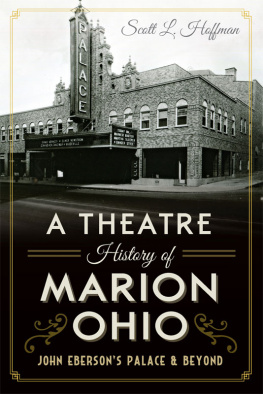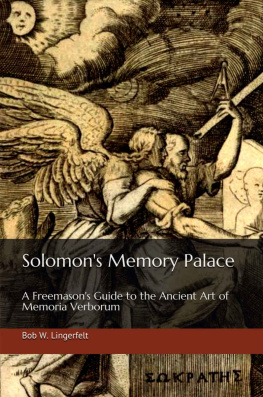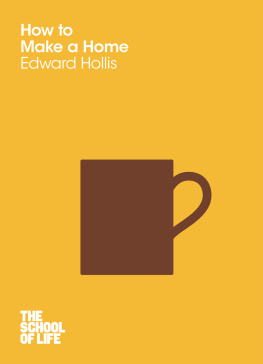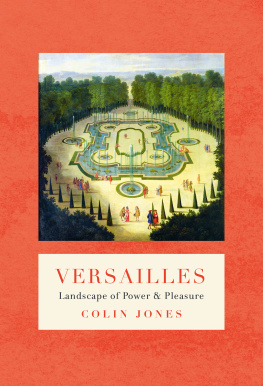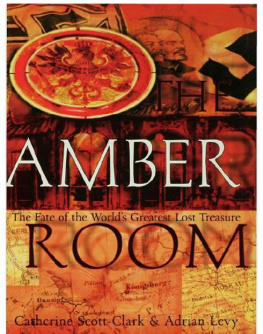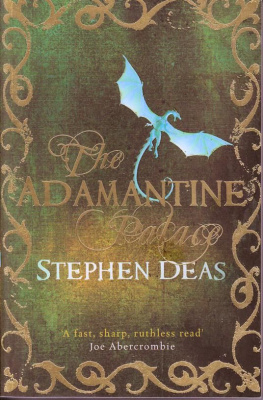THE MEMORY PALACE
EDWARD HOLLIS studied Architecture at the universities of Cambridge and Edinburgh. He has worked on ruins and follies in Sri Lanka and villas, breweries and town halls in Scotland. He teaches at Edinburgh College of Art and his first book was The Secret Lives of Builidings (Portobello, 2009), which was longlisted for the Guardian First Book Award and the Samuel Johnson Prize.
ALSO BY EDWARD HOLLIS
The Secret Lives of Buildings

Copyright Edward Hollis 2014
First published by Portobello Books, UK, 2013
All rights reserved under International and Pan-American Copyright Conventions. No part of this book may be used or reproduced in any manner whatsoever without written permission from the publisher, except in the case of brief quotations embodied in critical articles and reviews.
Library of Congress Cataloging-in-Publication Data
Hollis, Edward.
The memory palace : a book of lost interiors / Edward Hollis.
pages cm
Includes bibliographical references and index.
ISBN 978-1-61902-370-3
1. Interior architecturePsychological aspects.
2. House furnishingsPsychological aspects. I. Title.
NA2850.H65 2014
729dc23
2013042668
Text designed and typeset in Van Dijck by Patty Rennie
Cover illustration by Joe McLaren
COUNTERPOINT
1919 Fifth Street
Berkeley, CA 94710
www.counterpointpress.com
Distributed by Publishers Group West
10 9 8 7 6 5 4 3 2 1
FOR GRANNY
Contents

ITS ALMOST A MODEL: A LITTLE BRICK BOX, ONE OF THOUSANDS thrown down like toys somewhere in Londons outer ring. The Dolls House, its called; and its only half a joke. Its so neat and symmetrical that it feels as if one could hinge open the facade to reveal the rooms inside.
Granny is waiting for me there, sitting in her sitting room. The fireplace is surrounded by pictures and little tables, upon which perch, precariously, flowers, ashtrays, and yesterdays Daily Telegraph. Theres a sofa, four armchairs, a dining table, two corner cupboards, and two sideboards. There are two rugs, six curtains, and three mirrors. There are tens of pictures and hundreds of books, thimbles, paperweights, carriage clocks, statuettes, samplers, and vases. There are light bulbs, and biros, and a cupboard full of broken hoovers. The TV is on, at full blast, and so is the radio. There are more than 250 objects in there. I have counted them.
But it isnt a mess. Everything has been carefully constructed, arranged, collected, matched, and ordered to compose the whole room into a picture. Theres a place for everything, and everything is in its place.
Hello darling, she says, and I bend down to kiss her cheek. It is powdery and as pale as that of a china doll. Would you like a tea? Ill get
But she doesnt get up. She cant. Two years ago, my grandmother lost the ability to walk up the stairs; and then one morning last January she woke up to find that she couldnt get out of bed. She was a model, once, and athletic, but now her legs are twisted, her feet crushed by years of pointed high heels into bunions as cruel as those on the most tightly bound feet in China. Rather as a monkey swings from tree to tree, she lurches from mantel to card table to cabinet to curtain, navigating from grip to grip. As a consequence, the simplest tasks take her hours.
Ive put out some biscuits on the side! she shouts through, and she has. Granny has already arranged everything: I can see our supper congealing in saucepans on the hob, and even the bacon sitting in a saucer for tomorrows breakfast, curling slightly at the edges. Granny has prepared everything in advance you have to if you cant walk much and however curiously it is set out, I resist the urge to rearrange it. It would infuriate her, and she would spend hours putting it all back again, exactly where she has memorized it to be.
And I come back with my tea, and sit down in the sitting room. How was London? she asks. She already knows the answer: crowded, noisy, nightmarish. She hasnt been up for a couple of years now. And how are your boys? Granny means my students. Even though I teach interior design, she assumes theyre all boys. Did you see the news? Awful wasnt it? Its all just violence and celebrities now. I always agree with her, firmly. It would be pointless to do otherwise.
It would be pointless for, as she and her friends become immobile or, worse, die, my grandmother finds herself more and more alone at home, less and less able to communicate with an outside world that, as a consequence, appears to her more and more irrelevant and confusing. What was once a boundless domain now looks more and more like the direst stories on the telly because that, increasingly, is all shes getting to see of it. A cluttered sitting room in a dolls house has become my grandmothers whole world. No wonder she arranges it with such care.
* * *
This book is an anthology of rooms that might seem nothing like the one in which my grandmother sits. There is a cave where men turn into wolves, and a chair that, when its put in the right place, connects heaven and earth. Theres a dungeon in an enchanted island and a boudoir for an enchantress, lined with magic mirrors. Theres a cage containing a priceless mountain of light, and a room thats made only of air. Strange they might seem, but they are all like the Dolls House, for each one of them is an interior.
It is only since the nineteenth century that people have been writing histories of them. Some, like Edith Whartons The Decoration of Houses, are guides to high society taste and manners. Others, such as John Piles exhaustive History of Interior Design, treat the interior as the inward extension of Architecture. Others still, such as Steve Parissiens Interiors: The Home since 1700, explore the middle-class values of comfort and display. More recently, Bill Brysons Home is the latest in a long line of histories of domestic life. In general, histories of the interior have been written by, for, and about women like my grandmother: the homemakers of the aspirational bourgeoisie.
But this history will argue that the art of the interior is something even more important than the making of the middle-class home, for it has been provoked by the words of Mario Praz, who was both a historian of the home and a scholar of romantic literature. The interior, he argued, is:
In 1945, Praz wrote what has been translated into English as
Next page


